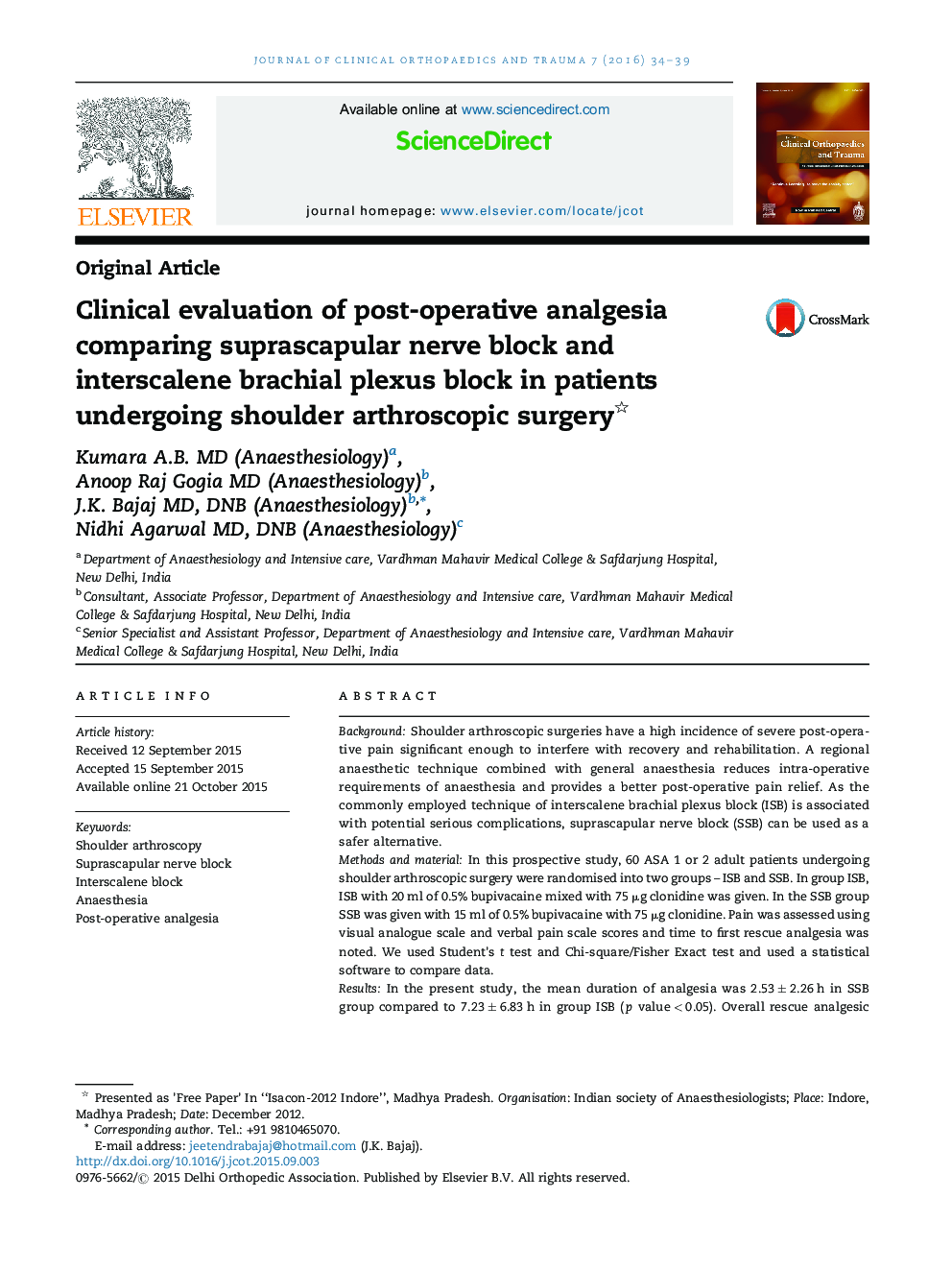| Article ID | Journal | Published Year | Pages | File Type |
|---|---|---|---|---|
| 3245187 | Journal of Clinical Orthopaedics and Trauma | 2016 | 6 Pages |
BackgroundShoulder arthroscopic surgeries have a high incidence of severe post-operative pain significant enough to interfere with recovery and rehabilitation. A regional anaesthetic technique combined with general anaesthesia reduces intra-operative requirements of anaesthesia and provides a better post-operative pain relief. As the commonly employed technique of interscalene brachial plexus block (ISB) is associated with potential serious complications, suprascapular nerve block (SSB) can be used as a safer alternative.Methods and materialIn this prospective study, 60 ASA 1 or 2 adult patients undergoing shoulder arthroscopic surgery were randomised into two groups – ISB and SSB. In group ISB, ISB with 20 ml of 0.5% bupivacaine mixed with 75 μg clonidine was given. In the SSB group SSB was given with 15 ml of 0.5% bupivacaine with 75 μg clonidine. Pain was assessed using visual analogue scale and verbal pain scale scores and time to first rescue analgesia was noted. We used Student's t test and Chi-square/Fisher Exact test and used a statistical software to compare data.ResultsIn the present study, the mean duration of analgesia was 2.53 ± 2.26 h in SSB group compared to 7.23 ± 6.83 h in group ISB (p value < 0.05). Overall rescue analgesic requirements were higher in SSB group compared to ISB group (63.3% versus 40.0%) but this was statistically not significant (p value > 0.05).ConclusionBoth interscalene and SSB can be used to provide intra-operative and post-operative analgesia in patients undergoing shoulder arthroscopy.
